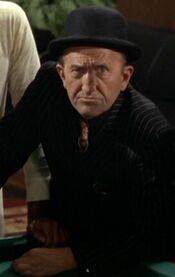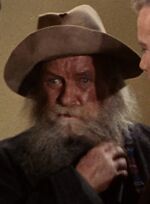My review of jazzy folk-country band Horse’s Ha over at Metropulse.
Monthly Archives: August 2009
How Much Does Mediafire Suck?
So I’ve gotten feedback that the downloads work more or less okay…but that the site has lots of popups and is generally annoying to work with. Is that other folks’ experience as well? And how irritating is it overall?
I’m wondering if I need to upgrade to a pay account, which I think will eliminate that nonsense…but I’d like a little more feedback before I do that, if possible.
Overheard: the power of Frank Miller
It’s the end of summer and the students are back, and tonight packs of them are ranging up and down St-Laurent Blvd, making noise outside the cafes and bars. So are white tow trucks with the lights going on top of their cabs, because for some reason each truck has three yellow alarm lights planted up there in a row, like sirens. Either the sirens or the trucks’ horns are making a racket. I don’t know what any of this is about.
Ooku: The Inner Chamber
Somewhat uncharacteristically, I’m actually reading a book that’s up to the minute. There are a bunch of reviews of Fumi Yoshinaga’s highly acclaimed Ooku out at the moment. One I looked at today is by Kate Dacey
I’ll be honest: I’m not quite sold on Ooku yet. For all its dramatic and socio-political ambitions, volume one isn’t nearly as daring or weird or pointed as it might have been. If anything, it reminds me of a BBC miniseries: it’s tasteful, meticulously researched, and a little too high-minded to be truly compelling.
That got me thinking…you know, I really don’t have anything at all against BBC miniseries. Cutely homely, talented actors performing fairly well-written scripts — I’m cool with that. Sure it’s middlebrow — but everything middlebrow isn’t bad.
More to the point, I’ve actually seen the weirder, more daring, pulpier, louder, and splashier version of Ooku. It’s called Y: The Last Man, and it’s really not all that good.
To back up for a minute, for those not already familiar with the plot: Ooku is basically a costume drama set in an alternate past. Sometime in the 1600s or so, a plague in Japan killed most of the men. Now, in the 18th century, women hold most positions of power and authority, and the few remaining men are second-class citiziens, carefully protected (and commodified) for their seed.
Y: The Last Man also, of course, featured a plague that killed men — but it was (over) orchestrated for maximum drama. Not just most, but all of the guys (except one) died, and it all happened simultaneously. The narrative then centered around women trying, somewhat efficaciously, to fill male roles in the face of a sudden, devastating apocalypse. And, of course, there was spy nonsense and relentless action and everybody shooting each other — all the flash Dacey is missing in Ooku.
There’s no doubt that Ooku is really quiet — which is actually what I like most about it. Rather than big, macro-level statements about Men and Women and How the World Has Changed, Ooku focuses on the small details. Most of the story follows Mizuno, a son of an impoverished samurai family. Mizuno is in love with a childhood neighbor named O-Nobu, but he can’t marry her, both because he’s too poor and because he’s too valuable: as a fertile man, he is basically his family’s chief asset, and they need to sell him off to a wealthy wife. Desperate to avoid marriage, he gives himself in service to the Ooku — the male seraglio of the female shogun. The bulk of the narrative is given over to his rise through the ranks of the Ooku, culminating in a final, bittersweet denoument.
Again, for me, the best part about how Yoshinaga handles this tale is how subtle she is. In Y: The Last Man, Brian K. Vaughn put up a big flashing light every time he touched on gender (look! supermodels collecting garbage! woo hoo!) Yoshinaga messes with gender expectations too…but she also suggests that, even in this new world, there are gender realities which are going to be slow to change. The result is not so much an earthquake as a series of tremors; the furniture shifts, and a couple of things break, but you have to look twice to see just what has happened.
For example, as I’ve mentioned, men are treated as sexual chattel in a way that’s analogous to the treatment of women. In some cases, we learn, men are actually sold to women as prostitutes — though this is more about women’s desire for children than it is about (pure) sexual pleasure. Moreover, while some men clearly do feel degraded by this set up, there are other options too; Mizuno, for example, actually gives himself for free to women because he feels sorry for their childlessness, and..presumably…because he enjoys it as well. Similarly, in the inner chamber seraglio itself, the men are, on the one hand, feminized (they are all obsessed with clothes and gossip and with being chosen by the shogun.) But, on the other hand, they still behave like men in a lot of ways — they participate in staged swordfights, for example…and (as happens not infrequently in all male communities like prison) they initiate newcomers through rape.
Mizuno himself is also very thoughtfully portrayed. A boisterous and open-hearted man’s man, in many ways, he’s also achingly naive and vulnerable; after fighting off the would-be rapists, for example, Yoshinaga shows his stern face collapse into exhaustion and despair. (“”Forsooth, O-Nobu,” he tells himself, “I have brought myself to a most terrible place indeed.”) Yoshinaga plays deftly with different kinds of knowledge, innocence, and insularity. On the one hand, Mizuno is shocked again and again by the ways of the Ooku — particularly by the homosexuality, which is, understandably, very rare in a world with almost no men. But, on the other hand, Mizuno, hailing from the cosmopolitan center of Edo, is actually much more stylish and fashionable than his new peers — there’s a great line (and kudos to the translator) where he calls one of the seraglio a “palace bumpkin” for not recognizing that gray kimono’s are in fashion.
We’re presented, in other words, with a clash between two worlds slightly different than each other, and each also different from our own. It’s a quiet tour-de-force, anchored by a trope that’s familiar in any context: true love. Again, there’s a parallel with Y: The Last Man. In Y, the main character Yorick spends the whole series racing about the world trying to find his girlfriend; true love is essentially a MacGuffin. In Yoshinaga, on the other hand, it’s not space but the much more unyielding wall of cultural reality that separates the lovers, and there isn’t anywhere in particular to run. Mizuno’s certainty that he will never be with O-Nobu colors the whole story with a deep melancholy. His agonized final lament (“‘Twas only through your kimono that e’er I felt the warmth of your body — ’tis not enough to take to a cold grave”) is unbearably painful and sensual at once — as, for that matter, is his night with the shogun herself. And yes, the twist ending made me cry — not that that’s the hardest thing to do, necessarily, but still.
Unfortunately, Mizuno exits the story at the end of this volume, and it looks like the rest of the series will focus on the shogun, Yoshimune, a character everybody else seems to love but who left me flat for the most part. Basically, she seems too good to be true; a lustful, miserly overlord with a heart of gold. It’s kind of fun seeing that stereotype cross-gendered…but only kind of, and I could weary of her quickly if she becomes more central. But whatever happens with the rest of the series, this first volume is pretty much perfect.
____________________________________
Extra Bonus Self-Referential Hooded Link Section:
My review of Yoshinaga’s Antique Bakery is here.
For more bishonen men forced into compromising positions with each other, do read Kinukitty’s column Gluey Tart: Adventures in Manporn.
And apropos of nothing except my own efforts at self-promotion — I’ve just started posting downloadable music mixes every week. The latest is called The Devil Always Shits In the Same Graves and includes gospel field recordings, Belgian psych drone, and Ukrainian black metal. So there’s that.
Update: Changed to reflect the fact that mulligans are not MacGuffins, no matter how much I might wish it were so.
Update 2: Kate Dacey clarifies her position in comments.
“Snow, Glass, Apples”
Wiki Trek: “City on the Edge of Forever
Joan Collins (b. May 23, 1933, in London)! Her dad was Jewish and from South Africa. Holy shit, Wiki says he was agent for Tom Jones, Shirley Bassey and the Beatles. (They had someone besides Epstein? Wiki’s Beatles timeline turns up nothing for Collins.) Anyway, from the client list it sounds like the dad was hitting his career peak just when his daughter was making it as a starlet.
She trained at RADA, which I didn’t expect, signed with J. Arthur Rank at 17, First movie was Lady Godiva Rides Again (1951). Signed with 20th Century Fox in 1954 as “their answer to Elizabeth Taylor” (Wiki), was “popular as a magazine pinup in the UK throughout the 1950s and into the 1960s.”
… Only two lines of Ellison’s script made it into the final, per Memory Alpha.
Look at this guy (John Harmon, b. 1905). He’s a bum in the mission, but he was also Tepo, the Durante-like gangster in “Piece of the Action” (the one who got transported in his underwear and said “Mamma!”). About 200 parts over the years, including a Buck Rogers serial in 1939. In 1975 he played “Old Hippie” on The Odd Couple.
“His career spanned seven decades and almost three hundred movie roles and television guest spots, many of them uncredited. Most of his television work was in the 1960s; he was a staple in television of that era …”
Soup kitchen drunk. Actor, b. 1918, played “the hotel clerk for the entire run of Gunsmoke” and showed up a lot on Dragnet. (Name: Howard Culver)
The fellow who drives the truck that hits Joan Collins is the same guy who drove the truck in Duel! Carey Loftin, (1914 –1997, he had an amazing career. Stunt coordinator for THX 1138, The Deer Hunter and The Goonies, which is quite a spread, career-wise, and he drove for Bullitt, The French Connection and The Getaway. I really had no idea.
“Statler was one of the founding and charter members of the Stuntwomens Association of Motion Pictures in 1967 alongside fellow Star Trek stuntwomen Regina Parton and Donna Garrett.”
Gluey Tart: Black Sun

Uki Ogasawara, Black Sun, 2008, 801 Media, Inc.
I can’t even think about this title without kind of flapping my hands and sputtering a bit. It’s – yes. Well. It is not for those of you who don’t appreciate your explicit content; nor is it for those of you who don’t have a healthy tolerance for dubcon. (Some would call it non-consensual, or noncon, but I think, in context, there really is dubious consent, or dubcon). You’ll also need to have a healthy tolerance for general absurdity, historical mishigas, and borderline racism. But presumably the yaoi fans among us are not dismayed by that sort of thing.
The story is set during the Crusades. This is just – think about this. A sweeping manporn tale of the forbidden love between a Christian knight and a Turkish general during the Crusades. It’s absurd to take yaoi history remotely seriously, but I just can’t stop myself from pointing out here that the point of the Crusades was for Europe to recapture the Holy Land from Muslim rule. Now, think about this in the context of the untenable position the Western world now finds itself in re. the Middle East. It adds texture.
Deus lo volt!
OK. I’m not going to say anything else about that.
I do want to mention the whole Japanese mangaka picking out European names thing, though. It’s wonderful. In this story, our uke (or bottom) is Prince Leonard de Limbourg, a monastic knight from Gerun Fortress. At first glance I thought someone was finally paying tribute to the gerund, a wonderful and under-appreciated part of speech, but alas, no. The Turkish general is Jamal Jan, which sounds like an old-school rap compilation. Another Western character is named Nicolaides Vassilios.
But let’s talk about the dubcon. I mean, the plot. Within the first thirty pages of the manga, Leonard has surrendered and Jamal has had his filthy way with him, in front of the troops. Huh, you might be saying. That sounds like rape. Rape is non-consensual. And yes, in the real world, it very much is. In yaoi, though, there’s a subgenre of uke who thinks he doesn’t want it but really needs a strong man to take him and thus show him what he really wanted all along. No, no, no, you’re saying. That’s still rape. That’s exactly the excuse rapists use. And yes, you’re right again. In the real world, this scenario is indefensible. In anything anyone might take remotely seriously, I’d have intractable problems with it. But in yaoi, and especially a title as over the top as this, it doesn’t bother me as a fantasy trope. You might feel differently – which is why I point out, prominently, that the relationship and the rest of the plot is built on what happens in this scene.
If this is something you can fantasize about, there’s plenty of, er, meat to this story. Oh, my God, the sex. Lots and lots of sex. Hugely embarrassing to try and read on the train, let me tell you. Penises everywhere. It seemed like every time I turned that page, I thought I was safe, but – no! Erection in panel two! Glistening bare buttocks in panel five! Unexpected fellatio in the full-page panel on the left! Black Sun is a full-body aerobic workout.
The art is good, too – and did I say explicit? No columns of light here. Very realistic naughty bits everywhere you look. It’s difficult to get past that, but there are also some wonderfully expressive faces – and pretty, too. Very, very pretty. And, um, elaborate costuming. I especially like the burlesque biking costume Leonard is sporting toward the end of the book.
And at the end, the entire manga is hijacked by a minor but pivotal turn by Nicolaides’ pet panther. From the panther’s point of view. I will not diminish its greatness by even attempting to describe it, but I do suggest that if you decide this title is not your cup of massively politically incorrect and potentially post-traumatic stress syndrome-inducing tea, you might want to pluck it off the bookstore shelf and read the panther story on the last few pages of the book.









